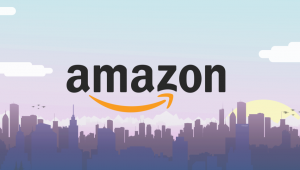 Though the current Seattle, WA site of Amazon’s spherical designed headquarters may continue to be its primary location, according to the WallStreet Journal, Amazon may open two more venues to accommodate the 50,000 people it plans to hire –and spend $5 billion building them.
Though the current Seattle, WA site of Amazon’s spherical designed headquarters may continue to be its primary location, according to the WallStreet Journal, Amazon may open two more venues to accommodate the 50,000 people it plans to hire –and spend $5 billion building them.
BritainLadd wrote in an article in Forbes recently, suggesting that Washington, DC, and Dallas, TX would be ideal locations because both are a major transportation and travel hubs which Ladd considers positives to Amazon’s selection of one or both of these two cities for its next headquarter’s location(s). But especially Dallas, TX which would be near the headquarters of Whole Foods, Inc., Amazon’s most recent acquisition.
In the meantime, architectural firms are envisioning what the $5 billion projects could look like both on the outside and the inside.
Cheryl Wing-Zi Wong, director of physical design at ESI Design says, “Amazon has become such an integrative part of the way we procure goods and ingest media, They’re a huge part of our daily lives. They want to be cutting-edge, particularly in terms of sustainability, but they also want to be familiar.”
Amazon’s current 400,000 square-foot high-performance office building in Seattle’s South Lake Union neighborhood was designed by ZGF Architects. Its spokesman, Maks Goldenshteyn, manager of communications, shared with NBC News, a few key design trends influencing Amazon’s upcoming project(s):
- Natural light filtered through a high-performance glass to minimize glare, allowing maximum daylight into the building without requiring extra cooling
- Green roofs to absorb rainwater, cut down on stormwater runoff, and irrigate the landscaping
- Interior and exterior spaces to encourage interaction
- Heated stone seats outdoors
- Rooftop terraces with tiered seating
- Bridges and canopies to shield pedestrians from the rain
- Trees, wall gardens, green pathways, and water features throughout to bring the outdoors in
- Public artwork
Ultimately, each project is likely to be less of a complex and more of a “village one can shop in,” said Strudwick of HLW London—inviting public engagement
